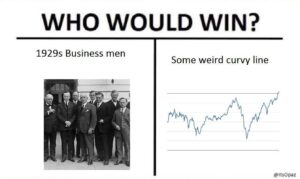In the heartland of America, where dreams are often built on the solid foundation of hard work and perseverance, one Oklahoma homeowner finds himself caught in a nightmarish landscape of financial uncertainty. Fifteen years of unwavering monthly payments have not shielded this father from the looming specter of foreclosure, transforming his once-secure $70,000 home into a battleground of unexpected legal and economic challenges. As the American dream begins to fray at its edges, his story emerges as a stark reminder of the fragile nature of homeownership in today’s complex financial ecosystem. Navigating the treacherous landscape of homeownership has become a nightmare for Mark Thompson, a 52-year-old construction worker from Tulsa, Oklahoma. His story of potential foreclosure highlights the complex and often opaque world of mortgage lending that can leave homeowners feeling helpless and betrayed.
After dedicating 15 years to consistent monthly payments on his modest $70,000 home, Thompson finds himself on the brink of losing everything. The cruel irony of his situation stems from a series of bureaucratic entanglements and financial maneuvers that seem to defy both logic and fairness.
Thompson’s journey began with what appeared to be a straightforward mortgage through a local lending institution. Each month, he diligently sent his payment, believing he was steadily building equity and securing his family’s future. However, a recent notification has turned his world upside down, revealing a labyrinth of financial complications that threaten his home ownership.
The mortgage documentation reveals a complex web of transfers between multiple lending institutions, each transaction potentially obscuring critical details about his loan’s true status. Thompson discovered discrepancies in payment records and unexpected fee assessments that suggest systemic irregularities in how his mortgage has been managed.
Local legal experts suggest that his case isn’t unique. The aftermath of the 2008 housing crisis created a landscape where mortgage documentation became increasingly convoluted, leaving homeowners vulnerable to administrative errors and potentially predatory practices.
Thompson’s frustration is palpable. “I’ve done everything right,” he explains, showing stacks of payment receipts and correspondence. “How can I be facing foreclosure after 15 years of never missing a payment?” His story resonates with many homeowners who feel trapped in a system that seems designed to benefit financial institutions at the expense of individual property owners.
Community advocates and legal professionals are now examining Thompson’s case, highlighting potential irregularities in the foreclosure process. They argue that his situation exposes broader systemic issues within mortgage lending practices that require immediate scrutiny and potential regulatory intervention.
For Thompson, the fight is personal and existential. His home represents more than just a physical structure—it’s a testament to years of hard work, sacrifice, and the pursuit of the quintessential American dream of homeownership. As he confronts the possibility of losing everything, his story serves as a powerful reminder of the fragility of property rights in a complex financial ecosystem.






